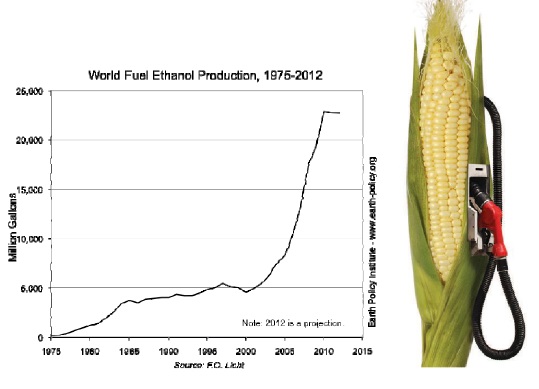The impact of alternative fuels
Dr. Edward P. Becker | TLT Automotive Tribology August 2014
Flexible-fuel vehicles are running on gasoline and ethanol.
ONE OF THE HIGHLIGHTS of the 2014 STLE Annual Meeting & Exhibition last May (for me, at least) was the keynote address by Dr. Don Hillebrand from Argonne National Laboratory on the topic “Advanced Vehicle Technology Research.” Don’s presentation covered such fascinating subjects as vehicle electrification, advanced combustion, alternative fuels and autonomous vehicles.
In the short time he had to speak, Dr. Hillebrand could only broadly cover each subject, so I will pick and choose a few of his points and expand on them here.
Regarding fuel efficiency, Dr. Hillebrand introduced the concept of Jevons Paradox, which states that as technology progresses, the increase in efficiency with which a resource is used tends to increase (rather than decrease) the rate of consumption of that resource. So we need to consider the possibility that increased fuel economy may actually result in an increase in the demand for fuel. Since fossil fuels are a finite resource, we will need to find other fuels for at least some of our automobiles.
Alternative fuels is a subject with much history, as illustrated here:
“Research engineers are now at work seeking new and satisfactory fuels which can be obtained, at a reasonable cost, to take the place of our rapidly decreasing supply of petroleum, from which gasoline is distilled.” —Wright, J.C. and Smith, F.C.,
Automotive Construction and Operation, J. Wiley & Sons, Inc., New York, 1924.
While some might argue that Wright and Smith were being overly alarmist, the more charitable interpretation would be that they were simply ahead of their time. For gasoline engines, the only alternative fuel in mass production is ethanol. In the U.S., nearly all gasoline is already blended with up to 10 percent ethanol, with an increase of up to 20 percent under consideration. To the average motorist, the major impact of an increase in ethanol content is a decrease in mileage, as ethanol contains less chemical energy on a volume basis.

To the tribologist, however, ethanol is a more effective solvent and less effective lubricant than gasoline. Generally, this means that all the components that come in contact with fuel need to be upgraded to deal with ethanol. Whether this means new materials for seals, coatings for flow components or upgrades to lubricants to deal with ethanol dilution, the cost of the component usually increases as well.
Solutions to these problems were worked out primarily in Brazil, which mandated the introduction of vehicles that would run on 100 percent ethanol. By 1986 about 75 percent of the cars manufactured in Brazil were dedicated ethanol vehicles. Due to changes in the respective price of gasoline and ethanol, Brazil moved to flexible-fuel vehicles, which will run on any combination of gasoline and ethanol. In the U.S., flexible-fuel vehicles are available that run on mixtures of up to 85 percent ethanol (designated E85 at the pump).
Will your car run on E85? If your car has a yellow gas cap, the answer is yes! However, many E85-capable vehicles were manufactured before the yellow cap became standard, so the best advice is to check the list provided by the U.S. Department of Energy (available
here) or consult your owner’s manual.
 Ed Becker is an STLE Fellow and past president. He is president of Friction & Wear Solutions, LLC, in Brighton, Mich., and can be reached through his website at www.frictionandwearsolutions.com
Ed Becker is an STLE Fellow and past president. He is president of Friction & Wear Solutions, LLC, in Brighton, Mich., and can be reached through his website at www.frictionandwearsolutions.com.